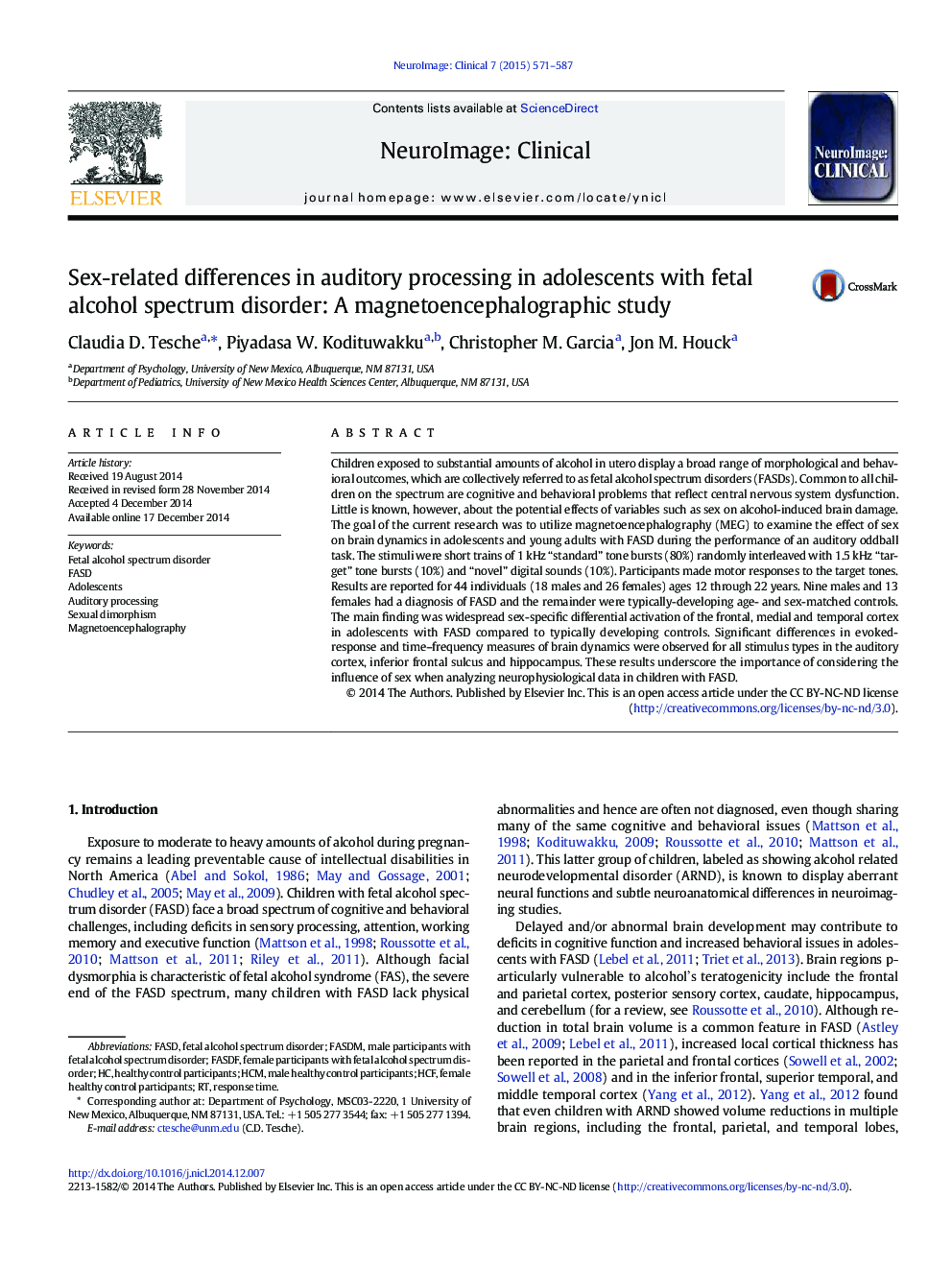| Article ID | Journal | Published Year | Pages | File Type |
|---|---|---|---|---|
| 3075111 | NeuroImage: Clinical | 2015 | 17 Pages |
•MEG study of auditory oddball task for 22 adolescents with fetal alcohol spectrum disorder (FASD) and 22 controls•Auditory N100m evoked-response latency differences for adolescent FASD opposite to those of very young FASD•Widespread sex-specific differential activation of the frontal, medial and temporal cortex in FASD compared to controls•Observed differences in evoked-response and oscillatory activity expand the set of potential markers for FASD.•The findings underscore the importance of considering sex when analyzing neurophysiological data in adolescents with FAS.
Children exposed to substantial amounts of alcohol in utero display a broad range of morphological and behavioral outcomes, which are collectively referred to as fetal alcohol spectrum disorders (FASDs). Common to all children on the spectrum are cognitive and behavioral problems that reflect central nervous system dysfunction. Little is known, however, about the potential effects of variables such as sex on alcohol-induced brain damage. The goal of the current research was to utilize magnetoencephalography (MEG) to examine the effect of sex on brain dynamics in adolescents and young adults with FASD during the performance of an auditory oddball task. The stimuli were short trains of 1 kHz “standard” tone bursts (80%) randomly interleaved with 1.5 kHz “target” tone bursts (10%) and “novel” digital sounds (10%). Participants made motor responses to the target tones. Results are reported for 44 individuals (18 males and 26 females) ages 12 through 22 years. Nine males and 13 females had a diagnosis of FASD and the remainder were typically-developing age- and sex-matched controls. The main finding was widespread sex-specific differential activation of the frontal, medial and temporal cortex in adolescents with FASD compared to typically developing controls. Significant differences in evoked-response and time–frequency measures of brain dynamics were observed for all stimulus types in the auditory cortex, inferior frontal sulcus and hippocampus. These results underscore the importance of considering the influence of sex when analyzing neurophysiological data in children with FASD.
